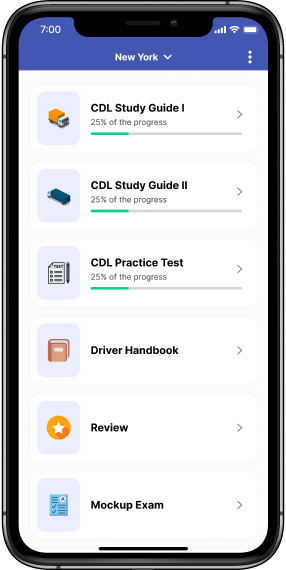A Guide to Successfully Floating Gear

Floating gear is not something new to drivers. It's an age-old dispute among professional truck drivers whether to choose floating gear or clutching to shift the vehicle. If you are a rookie semi-truck driver, you might ask how you can swim gear. Keep reading to understand how you can float gear on a semi-truck.
What Is Floating Gears? What Does Floating Gears Mean?
Floating gears are a form of clutchless shifting that use gears instead of clutches to extend the life of the clutch system. Floating gears is a growing familiar anecdote among truckers who prefer it, as truckers can travel long distances without engaging their clutch.
Floating gears can be challenging for rookie truck drivers as it requires sensing the change in packs. As floating gears while on the field are generally discouraged by trucking schools, there is a more straightforward method for learning and better performing it.Double Clutch VS Floating Gears
Double Clutching: Some drivers believe that a semi-truck should be shifted most of the time, engaging the clutch when changing gears. These drivers believe this is the correct way to go as it is best for the transmission's longevity.
Floating Gears: Other drivers prefer to shift gears without using the clutch, other than when starting out or on occasion. This group believes that overuse of the grip will lead to problems with the clutch. Many professional drivers who prefer to float gears complain of knee problems, so sometimes this preference is chosen to avoid knee strain.How to Successfully Float Gears
Figure 01. How to Successfully Float Gears within six steps.
Step 1: Watch Your Surroundings
The first thing to know when learning to float gear is that you need to be aware of your surroundings. This is especially true if you have never done this before. Do not attempt this on a significant highway your first time, as stalling could end in a deadly accident that will leave you liable for much more than a failed attempt to shift.
Some other things you should pay attention to before you attempt to float include:- People: Ensure no people are nearby if you are driving in the street.
- Cars: Locate the vehicles on the road around you and make sure that none will be affected if you fail your attempt.
- Your confidence: Don't try to float if you aren't ready. Make sure you understand what you are doing before you go all in.
All of these are vital to acknowledge before you attempt to float.
Once you are clear on your surroundings, you can attempt to float gear. Making sure that you are in a safe area is critical before you begin.Step 2: Accelerate to Your Shift Point
Upshifting and floating will be covered first because they are more straightforward to manage than downshifting. The best way to get acquainted with this technique is to practice it when upshifting and continue utilizing the clutch while downshifting.
The first thing you must do is accelerate to the speed you typically reach when changing gears. It should be simple to locate as you are accustomed to this speed. Once you reach this stage, you can move directly on to the next and continue packing your semi-truck with floating items.Step 3: Apply Pressure
Once you get at the speed you use to shift, start applying a little pressure on the gear lever towards your next gear. Being overly forceful could harm your car and your ability to go, so you must be careful.
- When applying this pressure, be sure to:
- Nothing is being forced into place by you.
- You aren't yanking the lever or pushing on it excessively.
- By floating, you can effectively shift into gear without using too much pressure. Once your hand has started to go, you may move on to the following action. Once floating has been accomplished, applying pressure will allow the lever to move into position.
Step 4: Gently Release the Gas
The next step in this process is to release the gas. This move should not happen all at once. You do not want to drop the gas at the same time. Instead, you want to ease off of it as you would if you were using the clutch to shift gears.
When easing off of the gas, ensure that:- Your foot does not leave the pedal throughout the process
- You ease up a little bit, rather than all at once, which stops the car
- You do not let go of the gas as you ease up on the speed
Keep these three things in mind as you take this step, as they are critical to successfully floating gear in a semi-truck.
As you ease up on the gas, your hand should be shifting. We will go over this part in the next section so that you can better understand the purpose of doing so.Step 5: Pull to Neutral
Your hand should continue to push while you let the gas out. You ought to be able to shift it into neutral at this time quickly. The center of your gears is where this location is.
Continue to use light pressure on the gear lever after shifting into neutral. The final floating stage will involve directing the stick into position with the help of your hand. You will be pretty close to finishing the floating procedure at this point.Step 6: Let the RPMs Drop
The last step is to allow the RPMs to drop. You should be able to see a small dial on your dashboard that indicates this shift. You can detect that the RPMs are leveling if:
- The needle falls on the dash
- Your car grows quieter as you pull back on the gas and gears
- These will let you know that the RPMs are going down and inform you that you can move on to the next step.
Your stick should then fall into the gear you are urging it into with your hand after this. You can keep driving after that without stumbling. When you need to upshift once again, repeat this procedure.
3 Secrets to Floating Gears Successfully
Slight Pressure: One of the secrets to floating gears smoothly is to apply or release a little pressure on the fuel pedal when pulling it in or out of the bag. The purpose of this is to help it ease into the next hole.
Timing: The timing between shifts is also essential. Bring the revs up where the transmission wants to pick up another gear. Then remove your foot from the fuel pedal, wait for a second, then slip it into the next bag. Then apply the fuel pedal again.Don't Force the Shifter: Remember, there is no need to force the shifter when changing gears with you aren't using the clutch. Only finger-tip pressure is required when pushing and pulling the shifter. This way, the driver can feel when the transmission wants to accept the gear. You never need to force a bag if you are shifting properly.Learn more about the CDL exams and valuable tips to pass the tests and obtain your commercial driver's license in our CDL articles.Get ready for the CDL exams with our CDL Prep app, providing a variety of exam-like Questions and state-specific practice tests.





